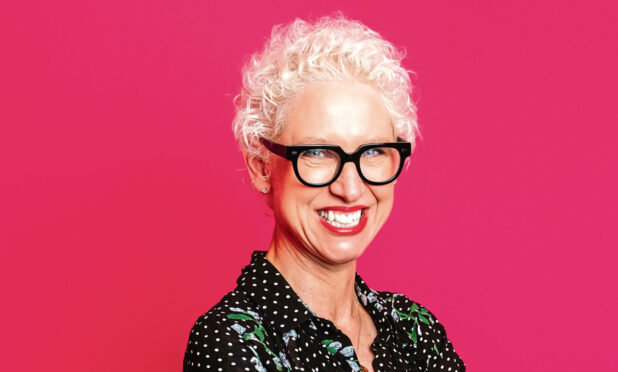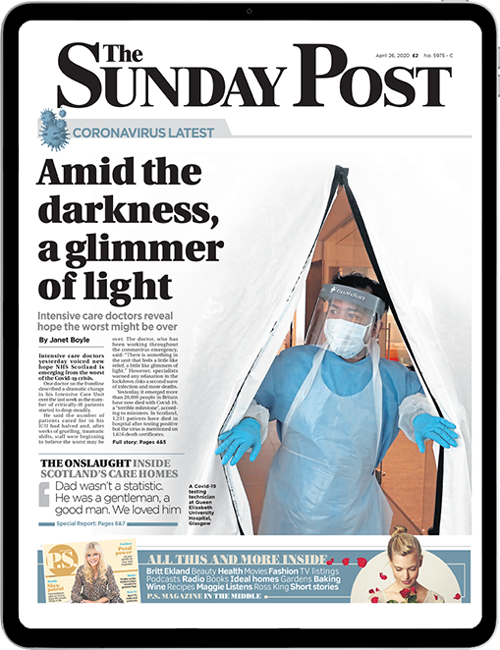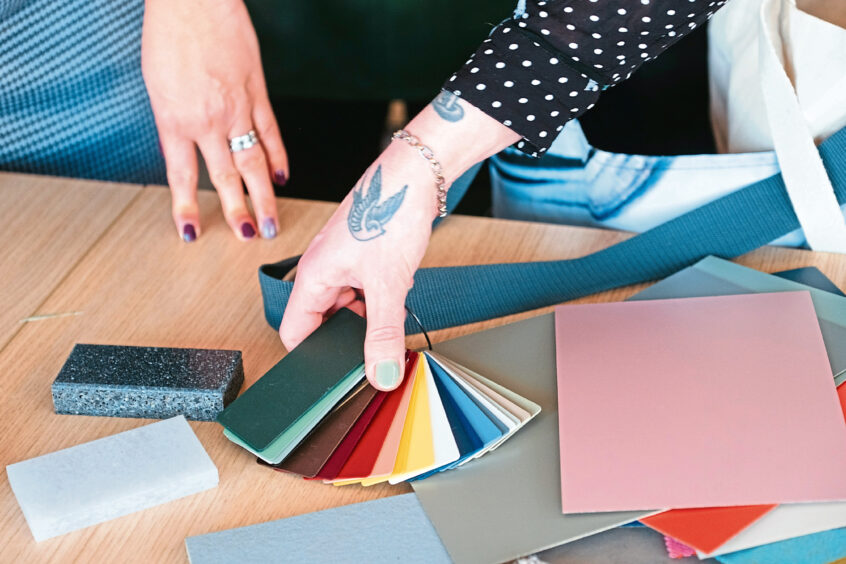
As a successful interior designer and presenter of the TV hit Scotland’s Home of the Year, Anna Campbell-Jones spends her working life being invited into people’s homes for what she says is her dream job.
Now she is lending her talents to a new project: creating a space aimed at breaking down the barriers which surround mental health.
Anna is helping Scottish Action for Mental Health (SAMH) to design a series of spaces called The Nooks, where people can drop in for mental health and wellbeing support in a safe and welcoming environment.
She was drawn to the project after speaking up about her own mental health on social media.
“I think it’s important for people to be open about it, for mental health not to be stigmatised,” says Anna, who has presented Scotland’s Home of the Year since 2019.
“I spoke about it on a podcast with Martin Geissler and afterwards he asked if I was OK to talk about it.
“I said I wouldn’t be embarrassed if I was talking about having broken my leg, you know?
“We’ve all got immediate, first-hand experience from ourselves or somebody close to us of mental health challenges.
“It’s not unusual for anyone, but because mental health is talked about so little there’s always this feeling that it’s kind of rarefied and terrifying.
“And it can be terrifying, of course, but it’s more terrifying if you think you’re the only person in the world that’s ever experienced something like that.”
The Nook
The Nooks, Anna hopes, will change that perception. The Glasgow Nook, located at SAMH’s offices, will open later this year and will be one of five spaces people can visit.
Anna teamed up with fellow designer Finni Porter Chambers to create the support hubs. SAMH has launched its biggest ever public appeal, with the charity aiming to raise £10 million over the next three years, to support the project.
“The Nook is a drop-in centre where anybody with any kind of mental health challenge can walk in and get immediate support and advice,” adds Anna.
“SAMH knew I’d spoken about my mental health journey before, and asked me to help create a space that would communicate the values and message they were talking about with The Nook. They asked me to help, so I took the ball and ran with it.
“They gave me a brief that was very detailed and sensible, and I had some brilliant conversations with the team, interrogating that brief and understanding what kinds of things we might do with the space that would be a little bit different and would help people see the Nook as a friendly, open and welcoming space that didn’t have any of the language people associate with a healthcare environment.”
Too many healthcare spaces look like hospitals, which can put people off visiting, Anna explains. One of the first things you see in Glasgow’s Nook, for instance, is a kitchen.
“It’s where you can make yourself a cup of tea and sit down, and it might be that that’s all you do the first time,” says Anna. “Maybe you just want to scope it out and see if you feel comfortable going back a second time.
“We have other spaces where you can sit on sofas and maybe have a chat, or somewhere where you can sit on your own and look out the window.”
There is also a combination of garden shed and beach hut in the inside location.
Practical tools
When Anna sought treatment during her own mental health journey, she spoke to several therapists and eventually found help with Cognitive Behavioural Therapy (CBT).
This form of talking therapy focuses on changing unhelpful thinking patterns. It is simple and practical.
“Because of what I do for a living, I’m a very solution-focused sort of person. So something which gives me practical tools that I can use to help me get myself out of a hole if I feel myself edging close to one is really, really good for me,” adds Anna.
“The therapist that I went to used a mixture of CBT and more conventional talking therapy and that was a good balance for me.
“I had to go to a few different therapists before I found one I was in tune with, and for everyone that’s going to be slightly different.”
Having a friend group consisting of women aged between early 50s and mid 60s also helps, says Anna.
“I’m very, very lucky, we all absolutely have each other’s back. And we all know that any of us can call any one of us when we’re in a crisis, and we absolutely close ranks and hold somebody up if they’re having trouble.”
For more information visit samh.org.uk

Enjoy the convenience of having The Sunday Post delivered as a digital ePaper straight to your smartphone, tablet or computer.
Subscribe for only £5.49 a month and enjoy all the benefits of the printed paper as a digital replica.
Subscribe © SAMH
© SAMH © SAMH
© SAMH